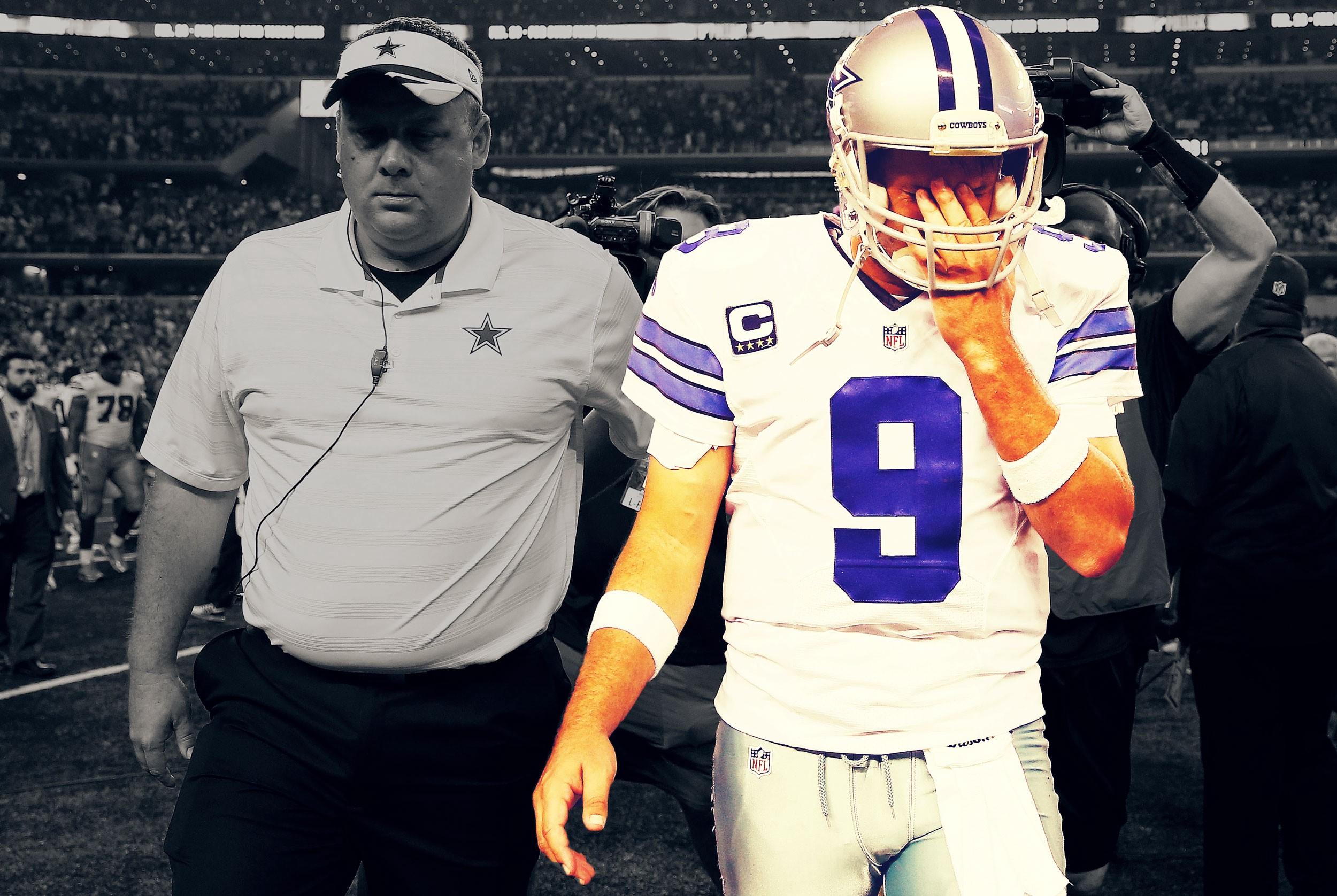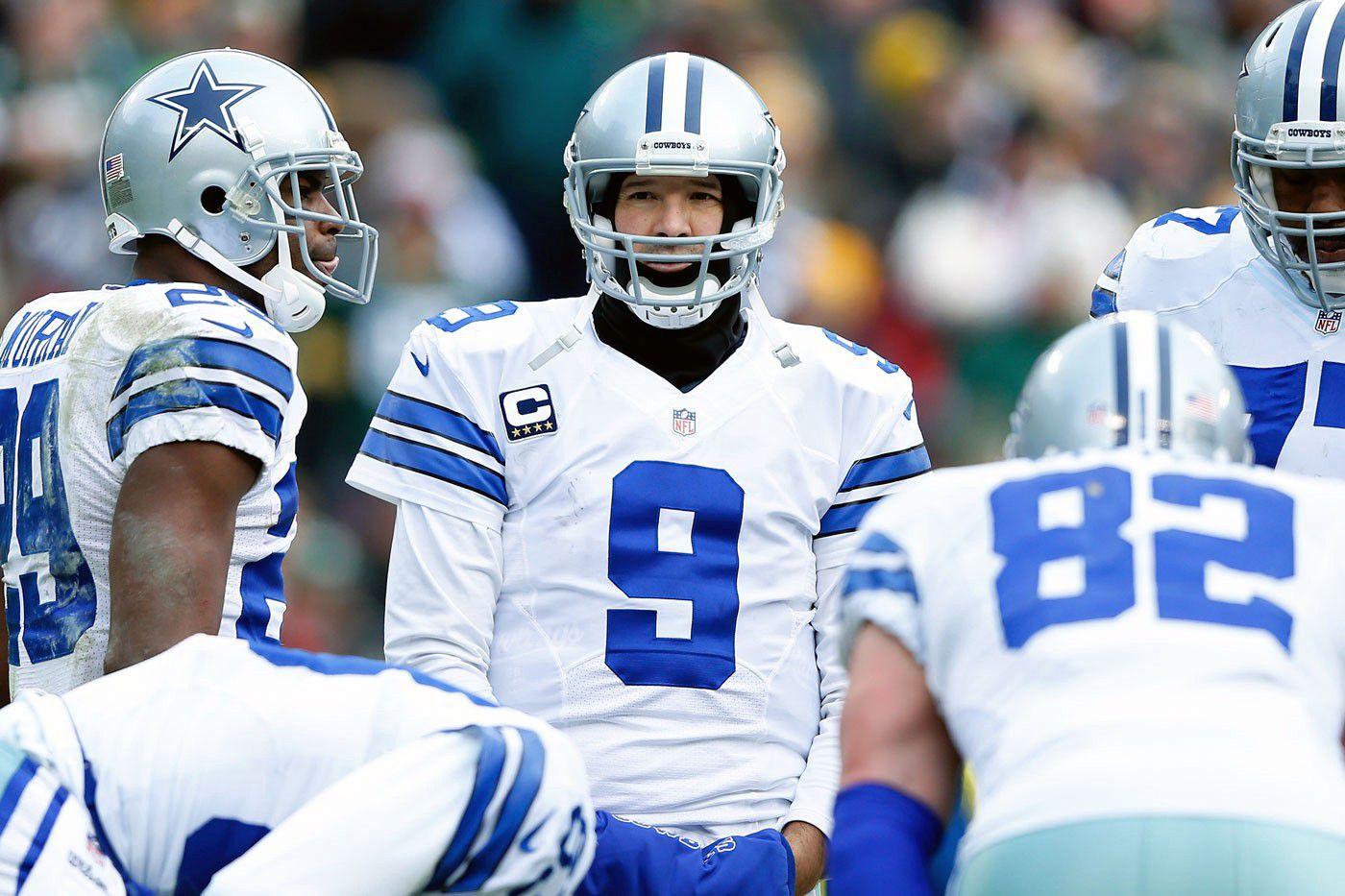
The worst part is that no one seemed surprised. When the news broke that Tony Romo’s latest back injury would keep the Cowboys quarterback out for six to 10 weeks, there was no shock. Only disappointment.
So far, Dallas has said all the right things. Head coach Jason Garrett claimed that the injury is unrelated to the transverse process fractures that Romo had two years ago. When asked if his QB could miss the entire season after breaking his L1 vertebra, Garrett said he doesn’t “believe that to be the case at all.” At this point, though, it’s just tough to envision Romo getting back on the field and staying there for long. The air of inevitability surrounding what happened last Thursday may be the saddest part of it all.
That Romo got hurt in the first quarter of a meaningless August exhibition only compounds the misfortune, but any debate over the value of the NFL preseason can happen another time. What matters in this case is less when Romo got hurt and more what he and the Cowboys have lost as a result.
Given the way rookie Dak Prescott has played this preseason, it’s likely that losing Romo won’t be the disaster for Dallas that it was the past three seasons, when the Cowboys went 1–13 in his absence. But the team still won’t be what so many in Dallas and so many who love football wanted: a supercharged version of the 2014 group that looked ready to usher in a new and triumphant phase in Romo’s career.

Dallas’s offense from two seasons ago was the end point of a perfectly orchestrated front-office plan. Over a five-year stretch, the Cowboys used four of their first-round picks on foundational offensive pieces: touchdown machine Dez Bryant and linemen Tyron Smith, Travis Frederick, and Zack Martin. The result was a brutally efficient running game, and a passing game built on Bryant’s dominance and Romo’s ability to make plays and keep drives afloat. Dallas finished fourth in offensive DVOA in 2014, and second in third-down conversion rate.

Its approach seemed tailor-made to maximize the impact of a QB who was about to hit his mid-30s. After plenty of seasons in which Romo was asked to do too much, he was now being asked to do exactly what he did best: deliver quick, accurate throws and extend plays to pile up first downs. In Dallas’s revamped quarterback incubator, Romo went 12–3 and recorded the best statistical season of his career; at age 34, he led the league in both completion percentage (69.9) and yards per attempt (8.5). The Packers’ Aaron Rodgers ran away with the MVP race that year, but Romo probably deserved more than the two votes he got.
When that Cowboys campaign ended with the Bryant incompletion ruling that still makes no sense, there was a feeling that Dallas had lost a rare opportunity — it had beaten the NFC championship game host Seahawks earlier in the fall — but there was no way to know the extent. With an offense fueled by a dominant running game, Bryant, and the best version of Romo to date, it was reasonable to believe that the Cowboys could sit atop the NFC East for at least the next few seasons. Since losing to the Packers, though, Romo has played in four games; he’s finished two of them.
The idea of any player’s late-career period being stolen away by injuries is heartbreaking, but for Romo it somehow feels worse. He arrived in our lives in a way almost identical to Tom Brady: on national TV in place of Drew Bledsoe. Romo never lifted the Cowboys to the heights that Brady took the Patriots, but from the start, he injected life into a hapless Dallas offense and helped drag a flawed team to a 9–7 record and the 2006 playoffs. We all know what happened next.
The botched hold on the potential game-winning field goal against the Seahawks in that wild-card matchup provided the first taste of a narrative that’s followed Romo around ever since. For all of his career highs — and there have been plenty — there has always been more of a focus on his lows. But that belies the fact that few QBs in recent NFL history have done a better job at transcending the pieces around them. Since Romo became a starter, among quarterbacks with at least 500 attempts, only Drew Brees, Chad Pennington, Peyton Manning, and Kurt Warner have posted higher completion percentages. Only Rodgers and Russell Wilson have averaged more yards per attempt. In the eight seasons that Romo has played at least half of the Cowboys’ games, Dallas has finished in the top 12 in offensive DVOA seven times.
Still, after turning around a 3–3 team and carrying the Cowboys to the 2006 playoffs, the talk surrounding Romo was about his botched hold. After Dallas went 13–3 and he threw 36 touchdown passes in 2007, it was about his fling with Jessica Simpson and the couple’s jaunts to Mexico. And after the Cowboys finished third in offensive DVOA in 2009 with Miles Austin and Roy Williams at wide receiver, the talk zeroed in on Romo’s playoff failings: Minnesota routed Dallas 34–3 in the divisional round.
The Cowboys didn’t make it back to the postseason until 2014, but when they did, it seemed like the start of a shot for Romo to reclaim a legacy that had unfairly been taken from him. Dallas entered this fall with many of the same holes it had that year, but with Romo, Bryant, and first-round running back Ezekiel Elliott, the offense felt like it had the pieces to dominate and overcome the team’s defensive shortcomings. Now, it feels like that chance might already be gone.
Hopefully, Garrett’s optimism isn’t misplaced. Hopefully, Romo’s recovery happens without incident, Prescott can keep the Cowboys in contention long enough to save their playoff hopes, and Romo can return by the Week 7 bye and play most of this season. If not, then the stretch of Romo’s career that was supposed to be his renaissance will instead have the opposite effect: It will be defined by even more missed opportunities.